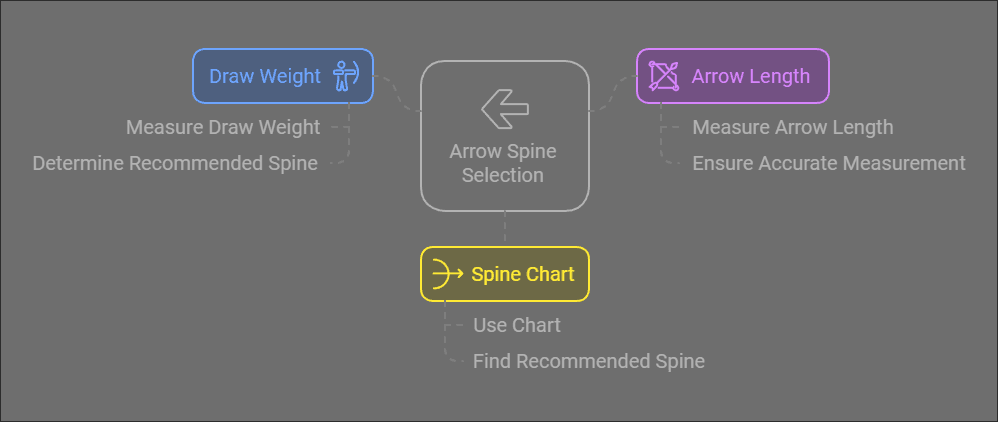Archery Arrows: Types, Uses, and How to Choose the Right Ones
Archery, an ancient practice turned modern sport and hobby, relies on one crucial piece of equipment: the arrow. But not all arrows are created equal. From traditional wooden shafts to high-tech carbon fiber designs, the world of archery arrows can be surprisingly complex. This comprehensive guide dives deep into the different types of archery arrows, their various uses, and, most importantly, how to choose the perfect arrows for your specific needs and archery style. Whether you’re a seasoned archer or just starting out, this article will equip you with the knowledge to make informed decisions and improve your accuracy on the range or in the field.
Table of Contents
Types of Archery Arrows
Archery arrows are broadly categorized by the material used in their construction. Each material offers unique characteristics that affect performance, durability, and cost. Here are the primary types:
- Wooden Arrows: The classic choice, wooden arrows offer a traditional feel and aesthetic. They are typically made from cedar, pine, or birch. While less durable than modern materials, they are still used by traditional archers and for historical reenactments.
- Aluminum Arrows: A popular choice for beginners and recreational archers, aluminum arrows offer a good balance of affordability and durability. They are consistent in weight and spine (flexibility), making them relatively easy to tune.
- Carbon Arrows: The top choice for competitive archers and hunters, carbon arrows are incredibly lightweight, durable, and offer excellent speed and accuracy. They are less susceptible to bending or breaking than aluminum or wood.
- Fiberglass Arrows: Often used for youth archery and recreational shooting, fiberglass arrows are very durable and inexpensive.
Anatomy of an Archery Arrow
Understanding the different parts of an arrow is crucial for making informed choices.
- Shaft: The main body of the arrow, typically made of wood, aluminum, carbon, or fiberglass.
- Nock: The plastic component at the back of the arrow that snaps onto the bowstring.
- Fletching: The vanes or feathers at the back of the arrow that provide stability in flight. Fletching can be made of plastic (vanes) or feathers.
- Point/Tip: The front of the arrow, which can be a field point for target practice or a broadhead for hunting.
Choosing the Right Arrows
Selecting the correct archery Arrows depends on several factors:
- Draw Weight: The draw weight of your bow (the force required to draw the string back) is the most important factor. Arrows are categorized by their spine, which is a measure of their stiffness. Choosing the correct spine is essential for accuracy.
- Arrow Length: The length of your arrows should be appropriate for your draw length. An arrow that is too short can be dangerous.
- Type of Archery: Different types of archery, such as target archery, field archery, and bowhunting, require different types of arrows.
- Budget: The cost of arrows can vary significantly depending on the material and quality. Consider your budget and how often you plan to shoot.
Arrow Spine Chart and How to Use It
arrow spine chart, arrow selection guide

Arrow Maintenance and Safety
Proper arrow maintenance is essential for safety and performance.
- Inspecting Arrows: Regularly inspect your arrows for damage, such as cracks, bends, or loose nocks or fletching.
- Cleaning Arrows: Clean your arrows regularly to remove dirt and debris.
- Storing Arrows: Store your arrows in a safe place where they won’t be damaged.
Frequently Asked Questions (FAQ)
Q: How do I know what size arrows I need?
A: You need to consider your draw length and bow draw weight. Consult an arrow spine chart or a professional at an archery shop.
Q: Can I use the same arrows for target shooting and hunting?
A: No, you need different types of points (field points for target shooting and broadheads for hunting).
Q: How long do arrows last?
A: With proper care, arrows can last for a long time. However, they should be replaced if they are damaged.
Q: What is the difference between vanes and feathers?
A: Vanes are made of plastic, while feathers are natural. Feathers are quieter but less durable.
Q: What is arrow weight measured in?
A: Arrow weight is typically measured in grains. A grain is a unit of weight equal to approximately 0.0648 grams.
Q: What is FOC in archery?
A: FOC stands for Front of Center. It refers to the percentage of an arrow’s total weight that is located in the front half of the arrow. FOC affects arrow flight and penetration.
Choosing the right archery arrows is crucial for accuracy, safety, and enjoyment of the sport. By understanding the different types of arrows, their components, and the factors to consider when making a purchase, you can improve your archery experience and hit your target with confidence.
and for Hunting Arrow Tips: The Ultimate Guide for Precision and Success







